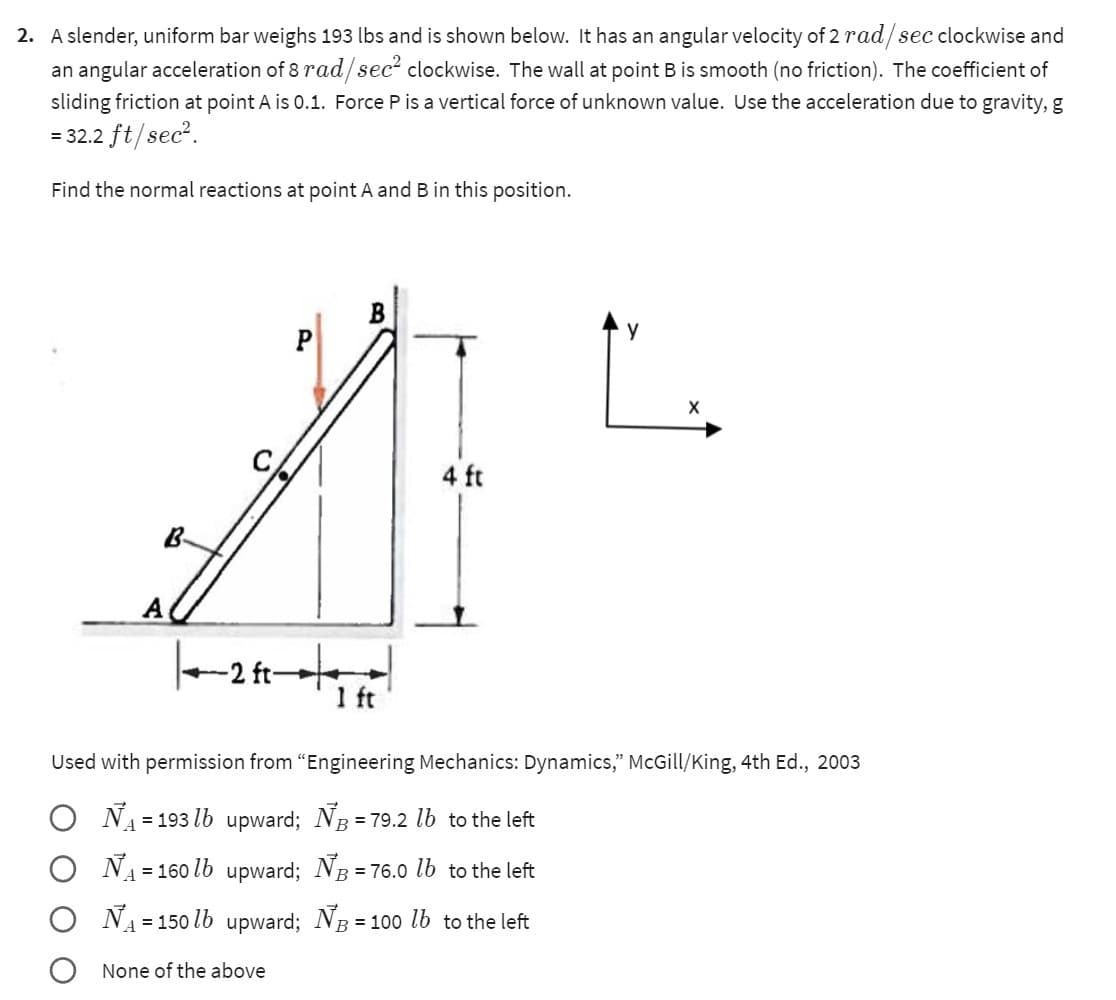A slender, uniform bar weighs 193 lbs and is shown below. It has an angular velocity of 2 rad/sec clockwise and an angular acceleration of 8 rad/sec² clockwise. The wall at point B is smooth (no friction). The coefficient of sliding friction at point A is 0.1. Force P is a vertical force of unknown value. Use the acceleration due to gravity, g = 32.2 ft/sec². Find the normal reactions at point A and B in this position. A |--2 ft- B 1 ft 4 ft y 1 X
Rigid Body
A rigid body is an object which does not change its shape or undergo any significant deformation due to an external force or movement. Mathematically speaking, the distance between any two points inside the body doesn't change in any situation.
Rigid Body Dynamics
Rigid bodies are defined as inelastic shapes with negligible deformation, giving them an unchanging center of mass. It is also generally assumed that the mass of a rigid body is uniformly distributed. This property of rigid bodies comes in handy when we deal with concepts like momentum, angular momentum, force and torque. The study of these properties – viz., force, torque, momentum, and angular momentum – of a rigid body, is collectively known as rigid body dynamics (RBD).
show complete solution and box the final answer (indicate the letter of the correct answer)

Trending now
This is a popular solution!
Step by step
Solved in 2 steps









